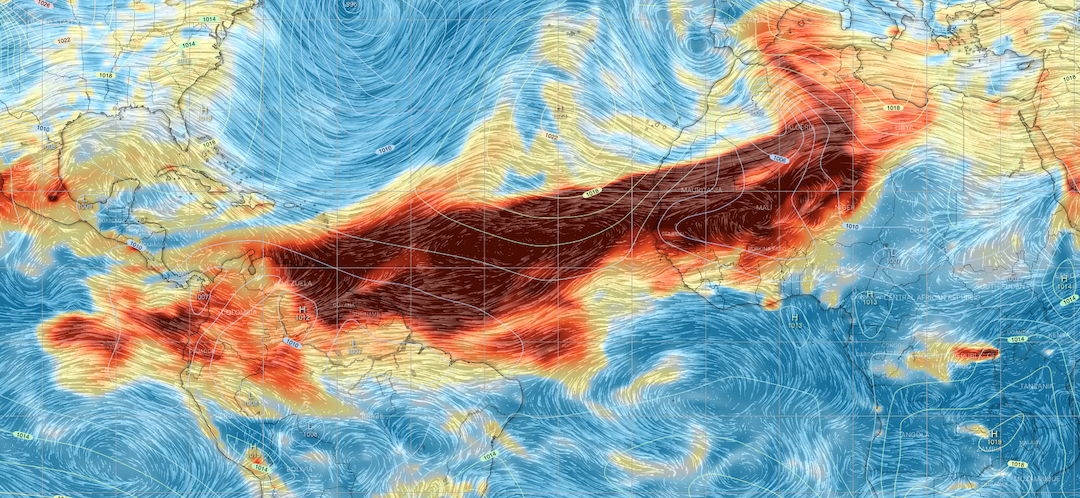
Imagery and caption from UN News: Plumes of ash billow from the La Soufrière volcano on the island of St. Vincent and the Grenadines which started erupting on 9th April.
In the early morning hours of 9 April 2021, La Soufrière in St Vincent erupted and has continued to do so in dramatic and disastrous fashion in the days since the first explosion. Massive ash plumes, explosions, and pyroclastic flows have forced people to evaucate and create extremely dangerous conditions in and around the area of the mountain, both on land and at sea. We wish all residents, emergency personnel, and good samaritans all the safety, strength, resolve, luck and skill required to survive and to evacuate from this horrible and worsening natural disaster.
The ash plume from this, now days-long, series of volcanic eruptions spans the central Atlantic Ocean and extends into Western Africa and even as far as the western Mediterranean region. The image below comes from Windy.com, a visual of sulfur dioxide in addition to patterns of wind circulation and isobars (lines of constant pressure). The intense, dark reds show high concentrations of sulfur dioxide, particularly evident from the La Soufrière volcanic plumes origin in the southern Caribbean to points much farther east and south.
Despite the obvious humanitarian emergency and the growing potential for a serious human toll in the Caribbean, animals may also experience deadly and extremely challenging conditions as a result of this ash. Birds are a likely group to interact directly with the ash, given their overlapping aerial distributions. Several posts over the last few years have commented on this phenomenon (e.g. this post approximately a year ago), but there remains a large gap in our understanding of the impacts of such an eruption. Peer-reviewed literature to date suggests that bird may avoid such plumes at times but also may experience metal concentrations in feathers and blood (e.g. these studies from 2016, 2019, and 2020). However, some research indicates that, while population affects related to ash falls may exist, rebounds in populations also occur. Whether these concentrations of elements from eruptions pose proximate or ultimate hazards to birds’ health is unclear.
Given the drift of the ash plume, numerous shorebird, passerines, and seabirds could come into contact with its particular matter in flight. Perhaps shorebirds will be grounded, passerines will exhibit similar behavioral issues to those migrants exposed to the wildfires in the western US in summer and fall 2020, or seabirds beached, all possibly with traces of volcanic ash on feathers and in blood. Observers in the Caribbean and southern US should watch carefully for any unusual behaviors that might be associated with exposure to volcanic materials, and banders and researchers handling birds and sampling blood should consider sampling for unusual metal concentrations in blood and feathers.





